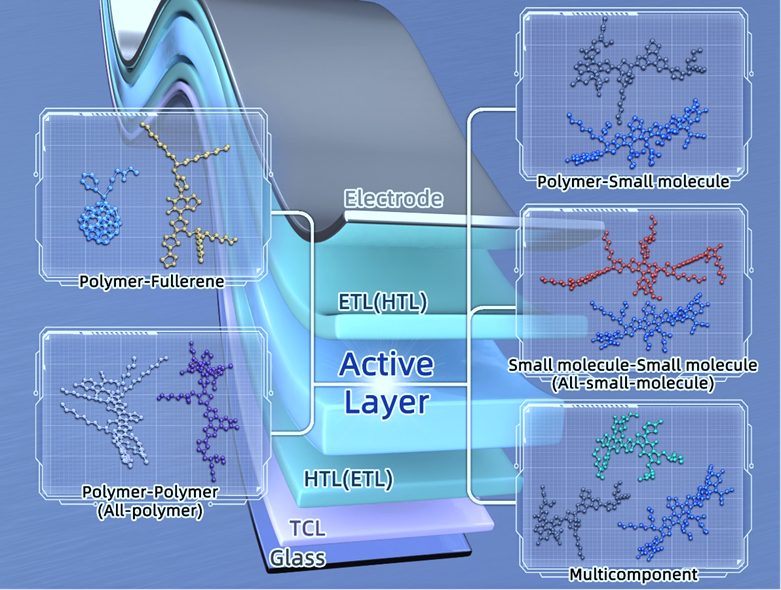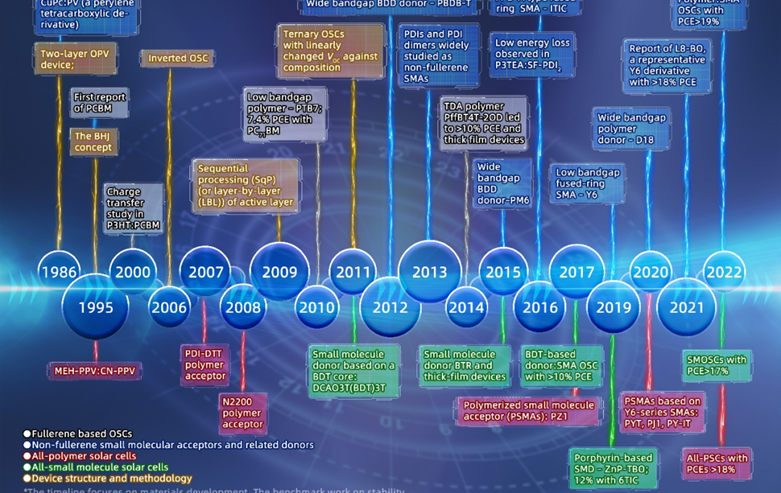New thin film solar cells, mainly represented by perovskite solar cells and organic solar cells, are about to enter the stage of large-scale industrialization. Compared to traditional inorganic thick film solar cells, organic solar cells (OSC) have advantages in distributed photovoltaic fields such as power generation glass curtain walls, vehicle mounted photovoltaics, IoT power supply, and biological implantation due to their flexibility, translucency, high indoor light matching, high power generation per unit weight, and potential biocompatibility. In the past decade, thanks to the development of various high-performance organic electron acceptors and electron donor materials, including polymers, small molecules, and fullerenes used for photoactive layers, the performance of OSC has been greatly improved. According to the combination of donor and acceptor materials, OSC can be divided into several mainstream types: polymer fullerene, polymer small molecule, all polymer, all small molecule, and multi-component organic solar cells.

Associate Professor Zhang Guangye from the School of New Materials and New Energy at Shenzhen University of Technology and Professor Yan He from the Hong Kong University of Science and Technology collaborated to explain the relationship between "structure performance large-area preparation" from the molecular structure level, starting from the material design strategies of each type of OSC. The development history of different material types of OSC photoactive layers was summarized, and their advantages and limitations were compared. For example, the advantages and disadvantages of various active layer combinations in OSC, as well as their future industrial development prospects, were horizontally explored from multiple aspects such as the speed of improving photoelectric conversion efficiency, photostability, film-forming ability, and repeatability. The impact of the stability of small molecule systems, morphology and repeatability of all polymer systems on the performance of these devices was emphasized, and the viewpoint that all polymer solar cells are the best branch direction for industrial prospects in the OSC field was proposed. In addition, the article points out that the cooperation between laboratories in the OSC field and the industry needs to be strengthened, and puts forward constructive views on the integration of industry, academia, and research.

The review article was published in the top international review journal Nature Reviews Materials (IF: 83.5) under the title Advantages, challenges, and molecular design of different material types used in organic solar cells. Zhang Guangye is the co first author and corresponding author of the paper, and Shenzhen University of Technology is the first completion unit.
Full text link: https://www.nature.com/articles/s41578-023-00618-1